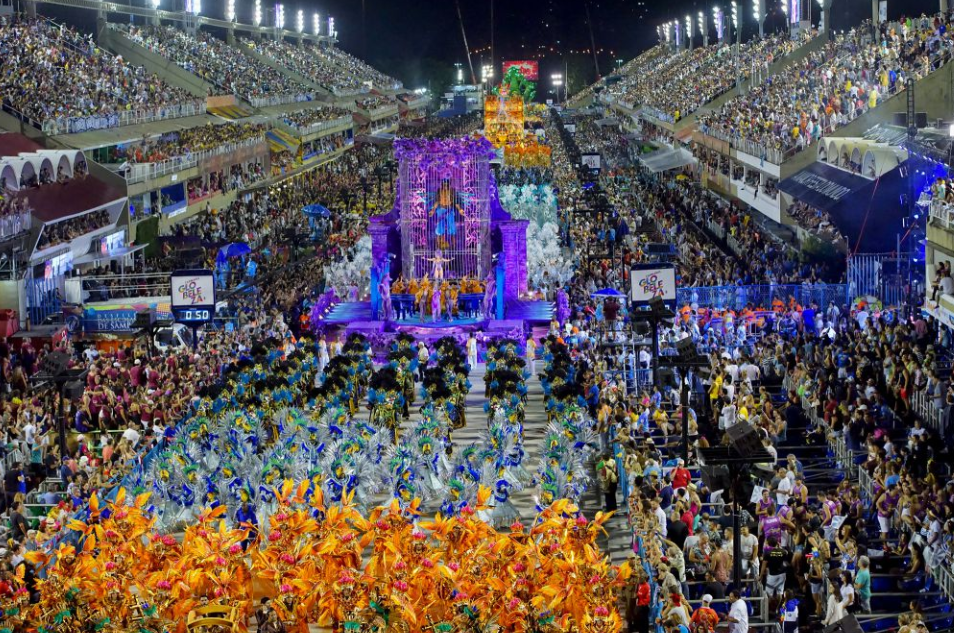Let's explore Brazil National Festival. The Carnival of Brazil is a vibrant and colorful celebration that is deeply rooted in the country's culture and traditions. This annual festival attracts millions of visitors from all over the world, making it one of the biggest events in Brazil. In this article, we'll take a closer look at the history, culture, and significance of the Carnival of Brazil. We'll also explore some of the unique features of this festival that make it a must-see for anyone interested in Brazilian culture. So, let's get started!
What is the Carnival of Brazil?
The Carnival of Brazil is an annual festival that takes place in the lead-up to Lent, which is the period of fasting and sacrifice in the Christian calendar. The festival is known for its lively and colorful parades, music, dance, and costumes. It is a time when the people of Brazil come together to celebrate their culture and heritage.
History of the Carnival of Brazil
The Carnival of Brazil has its roots in the European festival of Carnaval, which was brought to Brazil by Portuguese colonizers in the 18th century. Over time, the festival evolved to incorporate African and indigenous cultural elements, creating a unique blend of traditions that is distinctly Brazilian.
Significance of the Brazil National Festival
The Carnival of Brazil is an important event for the people of Brazil, as it provides an opportunity for them to express their cultural identity and pride. The festival is also significant for the country's economy, as it generates millions of dollars in revenue from tourism and local businesses.
The Parade of Samba Schools
One of the most iconic features of the Carnival of Brazil is the Parade of Samba Schools, which takes place in Rio de Janeiro and São Paulo. This is a competition between various samba schools, each of which creates elaborate floats, costumes, and performances that reflect a specific theme. The parade is a dazzling display of color, music, and dance, and attracts thousands of visitors every year.
Blocos and Trio Eletricos
Aside from the Parade of Samba Schools, the Carnival of Brazil also features smaller-scale street parties known as Blocos and Trio Eletricos. These events are less formal than the Parade of Samba Schools and allow visitors to experience the festival's energy and vibrancy on a more intimate level.
Costumes and Makeup
One of the most visually stunning aspects of the Carnival of Brazil is the elaborate costumes and makeup worn by participants. These are often inspired by traditional Brazilian culture and feature bright colors, feathers, and sequins. The makeup worn by performers is also highly intricate, often incorporating glitter and other embellishments.
Food and Drink
No festival is complete without food and drink, and the Carnival of Brazil is no exception. Visitors can enjoy a wide variety of traditional Brazilian dishes, such as feijoada (a stew made with black beans and pork), and drinks like caipirinha (a cocktail made with cachaça, lime, and sugar).
Safety Tips for Visitors
While the Carnival of Brazil is a fun and exciting event, visitors should be mindful of their safety. It's important to stay aware of your surroundings and avoid carrying valuables with you. It's also a good idea to travel in groups and stay in well-lit areas.
FAQs
- What is the history of the Carnival of Brazil?
The Carnival of Brazil has its roots in the European festival of Carnaval, which was brought to Brazil by Portuguese colonizers in the 18th century. Over time, the festival evolved to incorporate African and indigenous cultural elements, creating a unique blend of traditions that is distinctly Brazilian.
- What is the significance of the Carnival of Brazil?
The Carnival of Brazil is known for its lively and colorful parades, music, dance, costumes, and street parties. The Parade of Samba Schools is one of the most iconic features of the festival, while the smaller-scale Blocos and Trio Eletricos allow visitors to experience the festival's energy on a more intimate level.
- What are some traditional dishes and drinks served during the Carnival of Brazil?
Visitors can enjoy a wide variety of traditional Brazilian dishes, such as feijoada and drinks like caipirinha.
- What safety tips should visitors keep in mind during the Carnival of Brazil?
Visitors should be mindful of their safety, stay aware of their surroundings, avoid carrying valuables with them, and travel in groups.
Conclusion
The Carnival of Brazil is a celebration of the country's rich culture and heritage. Its unique blend of European, African, and indigenous traditions makes it a must-see for anyone interested in Brazilian culture. With its lively parades, music, dance, costumes, and street parties, the Carnival of Brazil is truly a feast for the senses.
References
- "Carnival in Brazil." Encyclopædia Britannica, Encyclopædia Britannica, Inc., www.britannica.com/topic/Carnival-in-Brazil.
- "History of the Carnival in Brazil." Rio Carnival, www.rio-carnival.net/history-carnival-brazil.php.
- "The Food and Drink of Brazil's Carnival." Eater, Eater, 25 Feb. 2020, www.eater.com/2020/2/25/21152691/food-drink-brazil-carnival-samba-soul-baiacu-malagueta-caipirinha.
